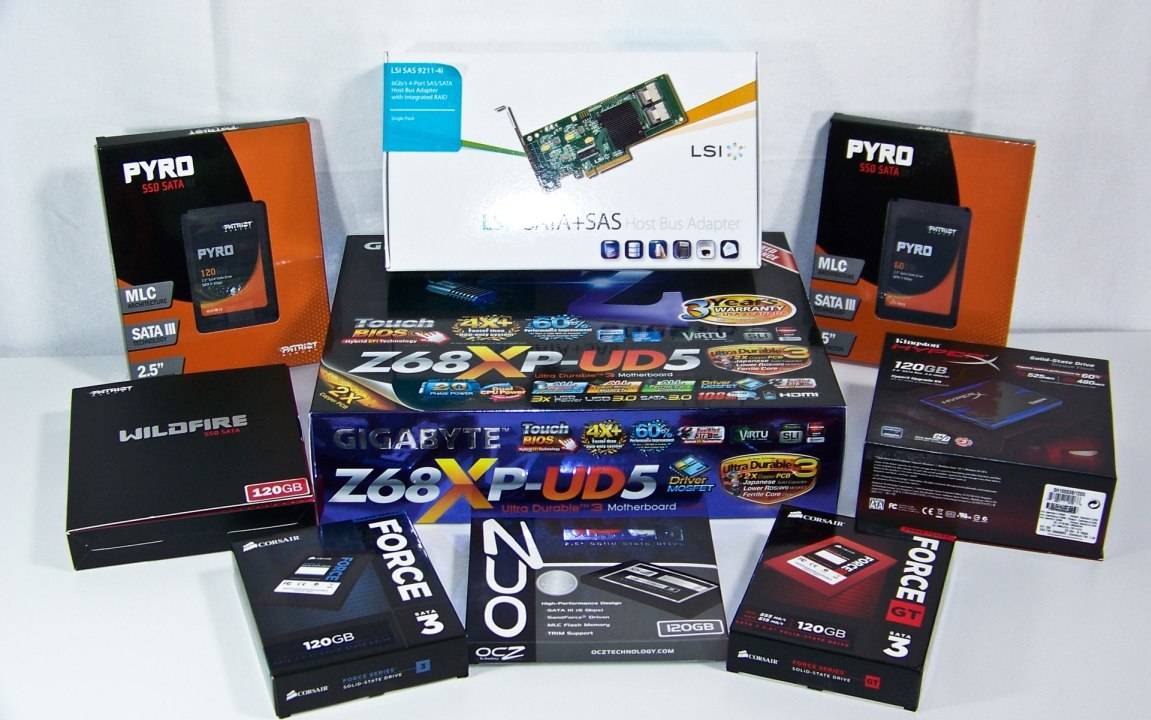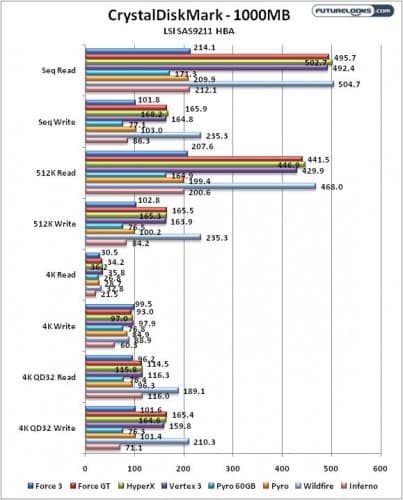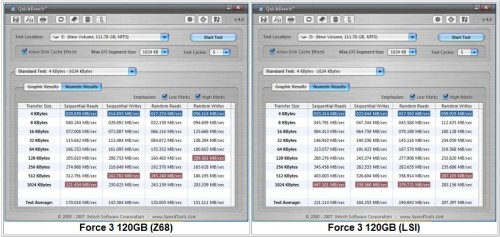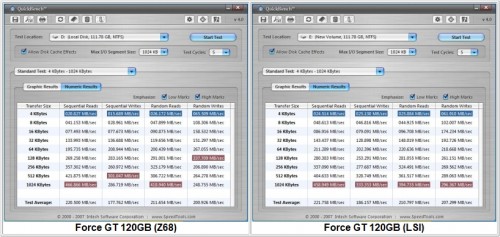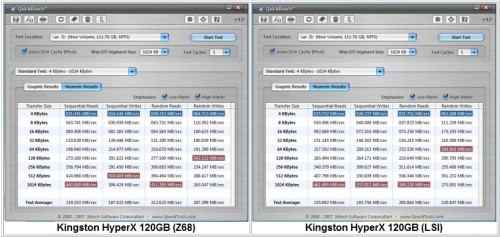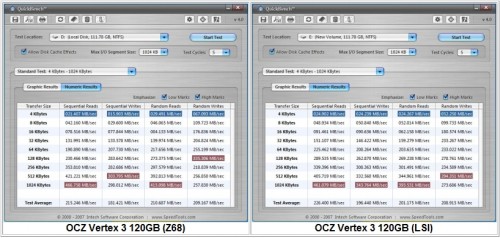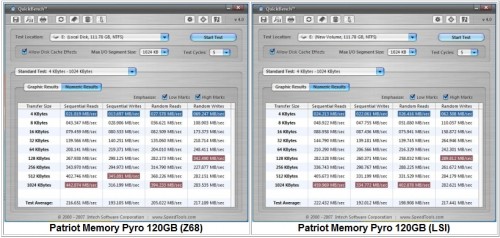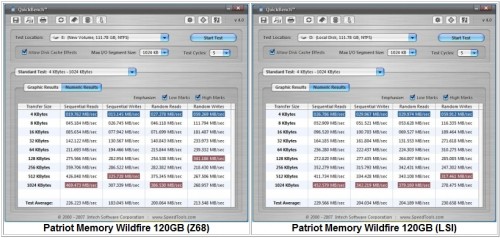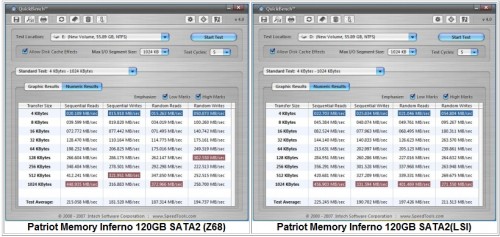Crystal Disk Mark 1000MB Test
CDM is often brutally honest about storage device performance especially using the 1000MB test. While 100MB tests often show better transfer rates, the storage device won’t work very hard nor show any controller characteristics. The more resilient the SSD and controller, the better the scores. The first graph includes scores using the GIGABYTE GA-Z68XP-UD5 native chipset SATA3 ports.
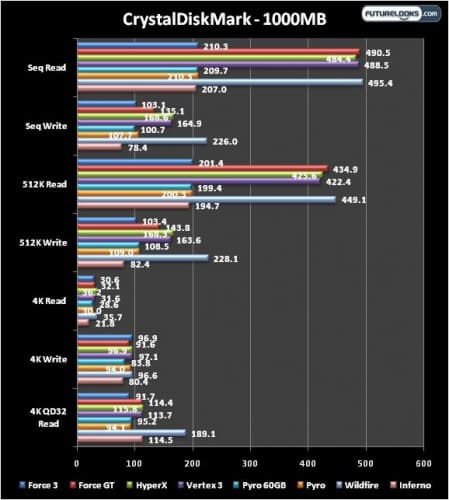 GIGABYTE GA-Z68XP-UD5 Motherboard
GIGABYTE GA-Z68XP-UD5 Motherboard
It’s a close race between the synchronous Force GT, HyperX, Vertex 3 and Wildfire. However, it’s the Wildfire that reports relatively strong 512K write and 4K QD32 read transfer rates. The HyperX read 4K data the best. The asynchronous Force 3 and Pyro SSDs scored similar 512K and 4K data block performance, but much less Sequential performance.
The LSI SAS9211 HBA improved sequential performance for the synchronous Force GT, HyperX, Vertex 3 and Wildfire. It improved performance minimally for the rest. In fact, it slowed the Inferno SATA2 SSD noticeably. This could be due to firmware or SATA2 miscommunication between the SATA3 HBA.
QuickBench – Data Block Test
In this round of tests, I tested all of the SSDs using the native Z68 port and HBA card. Again, you’ll notice that the LSI card performs a bit better using the PCIEx4 slot.
Once the SSDs cooled off, it was the Patriot Wildfire that lead the pack but only just over the Kingston HyperX. The Vertex 3 and Force GT fought a seemingly epic battle that would not end in either favored. With the scores so close, it got me to thinking that perhaps the PCIEx4 slot might be holding back the LSI card. Thus, we move on to the X58 testing platform.

